EV SUV Comparison: 2024 Audi Q8 e-Tron vs 2023 BMW iX vs 2023 Mercedes-Benz EQE SUV
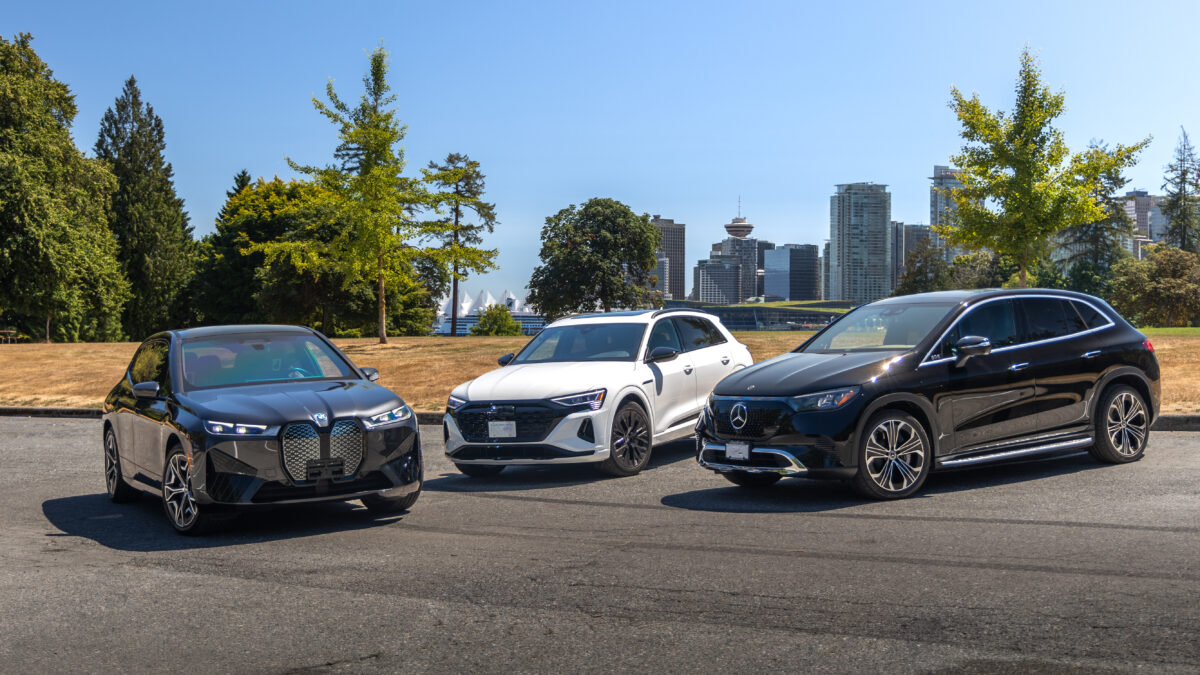
When SUVs were first introduced, people said that they were functional but boring. They’re just boxes on wheels. Then, when EVs were introduced, people thought they were impractical due to the short range and they weren’t as good to drive as normal gasoline-powered vehicles. So, what happens when you combine boring SUVs with impractical EVs? Do you get boring2?
Well, the 2024 Q8 e-Tron, 2023 iX, and 2023 EQE SUV are trying to break that mold. The Audi is a very stylish and exciting looking EV SUV. The BMW is available with over 600 hp. And the Mercedes-Benz is loaded with technology and comfort.
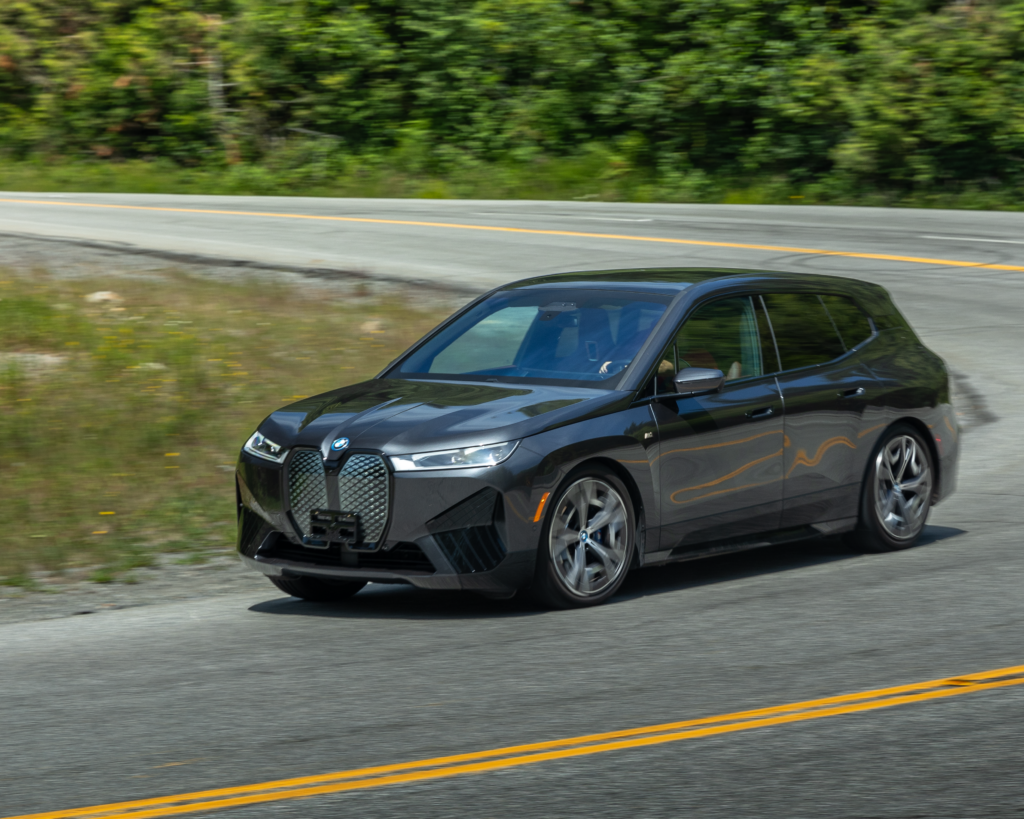
Are These Fun EV SUVs?
Starting off with the BMW iX, the M60 xDrive variant that we were able to drive for this review, provides 610 hp and 811 lb-ft of torque. It’ll accelerate from a standstill to 100km/h in less than 4 seconds. But this is a rare trim level of the BMW iX. A more modest iX xDrive40 and xDrive50 are available with 322 hp and 516 hp respectively.
Next is the Mercedes-Benz EQE SUV. It’s not as powerful as the BMW but you can get it with up to 402 hp & 633 lb-ft of torque. The one we had was the 350 with a much more modest 288 hp & 564 lb-ft of torque. Its 0-100 km/h time is around the 6.5 second mark but that number quickly drops to around 5 seconds in the more powerful EQE 500.
And finally, we arrived at the Audi Q8 e-Tron. It too has 402 hp just like the EQE 500 but a bit less torque at 490 lb-ft. The 0-100 km/h sprint is around the 5.5 second mark.
It’s hard to wrap your head around all those numbers but between the EV SUVs that we had on demo that day, the BMW iX was the fastest followed by the Audi Q8 e-Tron and the Mercedes-Benz EQE SUV rounding out the back. To put the speed of these electric SUVs into some context, you’d need something like the Toyota Supra in order to have any sort of chance in a drag race against the Audi and the Mercedes. As for the BMW iX M60, you’d probably need something like a Lamborghini Huracan STO in order to stand a chance against it. These are really quick electric SUVs in a straight line.
But what happens when the roads get twisty? Well, all of them have big & heavy batteries which don’t help with weight savings, but the batteries are mounted in the floor. This lowers the center of gravity which give the SUVs a planted feel around corners. Additionally, all three can be equipped with air suspension that can resist body roll through corners. They may not have the agility of lighter gasoline-powered vehicles around corners, but they will definitely raise your heartbeat by a few beats per minute.
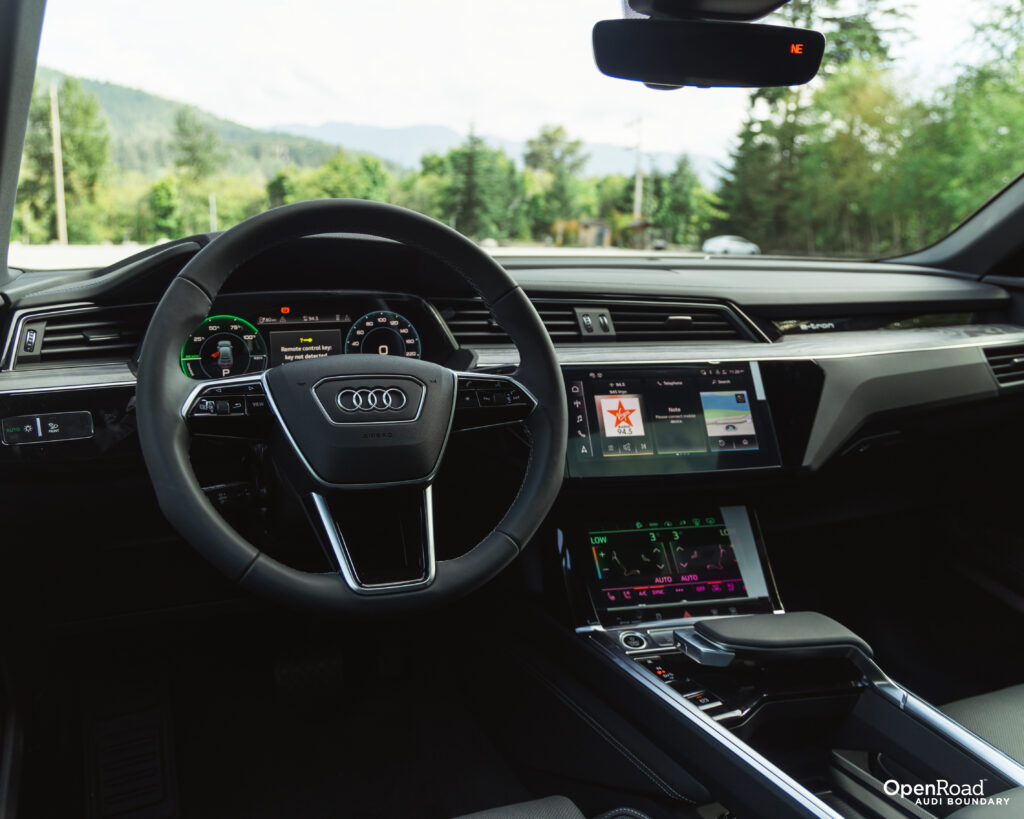
More or Less Practical?
When it comes to fun, these EV SUVs are definitely that. But these would be pretty useless SUVs if they couldn’t provide the same practicality of their gasoline counterparts.
Thankfully, these electric SUVs actually provide the same or more interior volume. The BMW iX has a bit more headroom and legroom across both rows of seats and more cargo space in the trunk when compared to the BMW X5. Unfortunately, it is not available with a 3rd row like the X5 40i but then again, the X5M or the plug-in hybrid version aren’t available with 3rd rows either.
The Mercedes-Benz EQE SUV is similar in size to the Mercedes GLE. It has similar headroom and legroom across both rows of seats. However, trunk volume is a little bit larger in the GLE than in this EQE but it’s not by a whole lot.
As for the Q8 e-Tron, it is similar in size to the gasoline powered Q8 with an ample amount of passenger space. But the cargo capacity is a bit less than the standard Q8 just like the Mercedes. Also, the electric version of the Q8 is available as a normal SUV or a sportback SUV design that further enhances the looks of this stylish car.
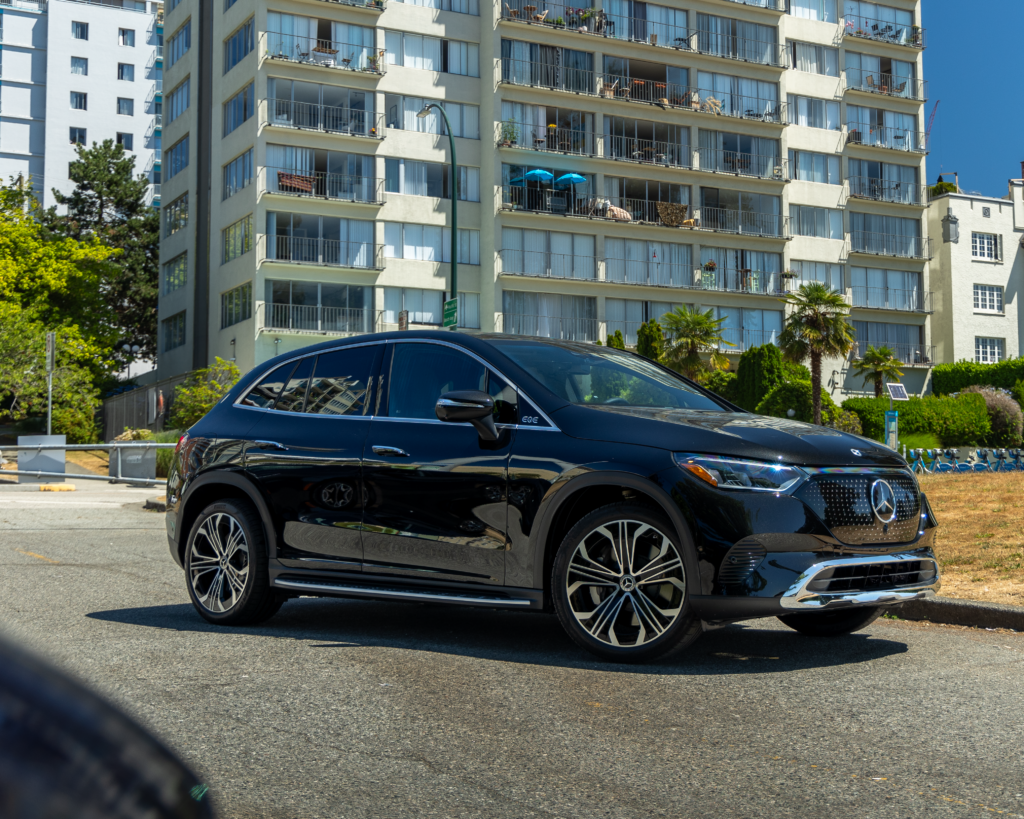
Efficient or Inefficient?
Some of the earliest electric vehicles had a range of just over 100 km. Thankfully, EV technology has vastly improved over the decades. The Audi Q8 e-Tron has a driving range of 459 km. The BMW iX M60 has a tiny bit more at 463 km. But the iX xDrive50 version has the longest range of up to 521 km. However, what you gain in range, you lose in power because it produces 516 hp instead of the 610 hp. The Mercedes EQE 350 has the least range at just 407 km but that number increases to 433 km in the EQE 500 along with more power from the electric motors.
Recharging all three takes roughly the same amount of time from a level 3 DC fast charger. Just 30 minutes from 10% to 80%. From a level 2 charger, you’ll be looking at around 9.5 to 12 hours to recharge these SUVs depending on their battery size.
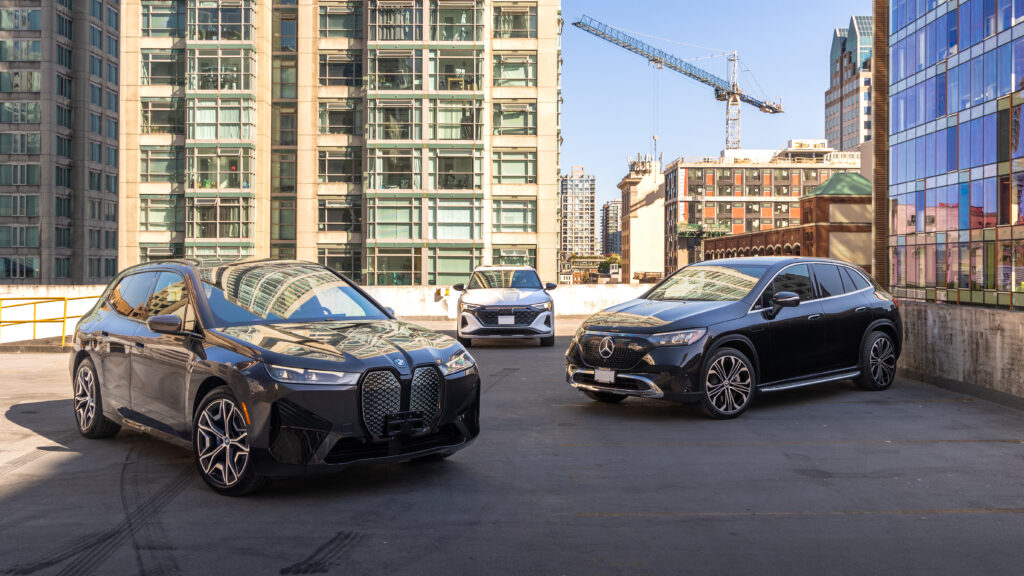
But the biggest difference between the three is their pricing. The 2024 Audi Q8 e-Tron and the 2023 Mercedes-Benz EQE 350 are the least expensive with starting prices of $95,950 & $94,900 respectively. However, the Mercedes can be equipped with optional extras that can push the price to well into the 6-figure mark. Additionally, the EQE 500 starts with a 6-figure price tag. The 2023 BMW iX M60 starts at $121,750 but it is available in lower, and less expensive, trim levels. All of the mentioned prices are the manufacturer suggested retail prices in Canadian currency and without fees & taxes.
While some may still look at EV SUVs as boring vehicles, it’s hard to deny that these three are anything but that. They each have their own unique characteristics, they’re just as practical as their gasoline counterparts, and, most importantly, they are DEFINITELY not boring to drive.
If you’d like to know more about any of these EV SUVs or would like to test drive one for yourself, please contact our product specialists at OpenRoad BMW Langley or The BMW Store in Vancouver, OpenRoad Audi in Burnaby and OpenRoad Mercedes-Benz in Surrey.

